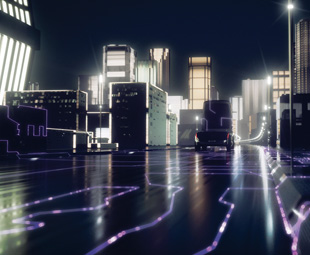E: the letter to define a generation?

E-mobility; I’m becoming obsessed by it – and you probably should too…
Putting aside all reservations about South Africa’s monopolistic telecommunications provider (and there are many), you have to admit that Telkom does flight some pretty clever and humorous TV commercials. One of my favourites of late is its series of ads: Business Connexion “Meet the future. Today.”
In case you’ve never seen them, the ads introduce “your future customers” by starkly contrasting the way kids in their late teens used to do things (maybe only as recently as half a decade ago) with the way kids just entering their teens do things today.
In addition to the fact that this particular series of ads makes me feel old – and I’ve only got 30 on the horizon – they do raise some important realities.
I alluded to it in Wheel Nut just last month – and as Charleen Clarke notes with great enthusiasm in her report of the 2016 IAA – the transport industry’s future customers are going to be prefixed with an “e-”!
E-mobility really is The Big Thing at the moment. ZF, a name that needs no introduction to anyone with diesel in their veins (soon to be e-sel?), took the opportunity afforded by the IAA’s Urban Logistics of the Future conference to present its ZF Study on the Future 2016: “The Last Mile”.
In conjunction with the Fraunhofer Institute for Material Flow and Logistics (IML) in Dortmund and the ETM publishing house in Stuttgart, ZF casts a light on current developments and presents forecasts for the next ten years.
A bit of context: In 2015, more than 2,9-billion parcels were sent in Germany (ZF being a German company). This is one billion more than in 2005 – and the next decade will see more of the same.
The reason is that more customers are purchasing goods online – and they expect their goods to be delivered to their doorsteps in a matter of hours. (Telkom ad, anyone?)
In short, there are seven trends that are relevant to the future of the “last mile”.
The researchers – led by Uwe Clausen, head of the IML – focused on 3D printing/local value creation, autonomous driving, e-mobility, digitisation, the Internet of Things, transport drones and delivery robots.
“We cannot, of course, predict precisely what the delivery process will look like in ten years – but these technologies are providing important impetus,” Clausen explains. “However, not all of them are equally important. We can expect that e-mobility, for instance, will play a more important role than 3D printing or transport drones.”
Autonomous driving was identified as a decisive trend. “The development of autonomous driving is at a fascinating stage,” says Clausen. “The basic technologies are already available. However, the question is whether the infrastructure and the logistics economy are prepared.”
According to Clausen, there are, for instance, pending safety issues: “How can we ensure that an automated vehicle detects a construction site, which is not properly signposted, or that it is not confused by incorrect lane markings? This is a key factor for autonomous delivery trucks to achieve social acceptance and offer economic advantages.”
That may be true … for now. However, if “your future customers” have anything to say about it in the next decade or so, you can be sure even today’s boffins will look on in wonder.
Published by
Focus on Transport
focusmagsa




